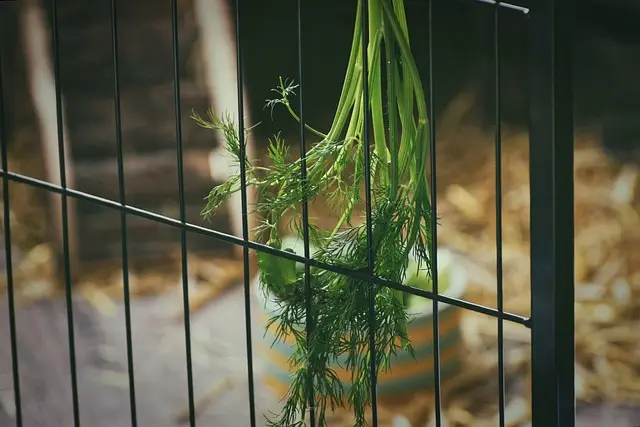Malaysian Kratom, a natural product from the Mitragyna speciosa tree, is celebrated for its diverse alkaloid profile and varied effects, with strains like Bali and Maeng Da being particularly recognized for their specific benefits. Grown in Southeast Asia's optimal conditions, this Kratom boasts high-quality active compounds such as mitragynine and 7-hydroxymitragynine. The unique characteristics of each strain, including leaf vein color and locality, influence its potency, with Horned Leaf, Green Vein Borneo, and White Vein Thai being notable examples. Users are encouraged to understand these strains to select one that aligns with their wellness goals. The cultivation process involves sustainable farming practices that preserve the environment and ensure quality. However, the legal status of Malaysian Kratom is complex, varying from accepting its therapeutic use in Malaysia to bans in other countries due to concerns over misuse and potential health risks. A balanced regulatory framework is essential to navigate both the benefits and risks associated with this botanical substance, emphasizing the need for responsible usage, ecological sustainability, and consumer safety.
Explore the intricate world of Malaysian Kratom, a botanical gem renowned for its diverse effects and potency. This article delves into the nuances of this unique plant, from the meticulous cultivation practices that shape its growth to the complex legal landscape surrounding its use. Uncover the secrets behind Malaysian Kratom’s strains, their distinctive effects, and how sustainable farming upholds their integrity. Navigate the ethical and regulatory considerations that make this natural substance a topic of global interest. Join us on this enlightening journey into the heart of Malaysian Kratom.
- Unveiling the Potency of Malaysian Kratom: A Comprehensive Guide to Its Strains and Effects
- The Cultivation Process of Malaysian Kratom: From Soil to Stem – Insights into Sustainable Farming Practices
- Understanding the Legal Status and Ethical Considerations of Using Malaysian Kratom in Different Regions
Unveiling the Potency of Malaysian Kratom: A Comprehensive Guide to Its Strains and Effects

Malaysian Kratom, harvested from the Mitragyna speciosa tree, is renowned in botanical circles for its potent alkaloid profile and diverse effects. This comprehensive guide delves into the nuanced strains of Malaysian Kratom, each offering distinct experiences that cater to a variety of user preferences. The Southeast Asian climate and rich soil provide an ideal environment for the cultivation of this plant, resulting in high-quality Kratom with a balance of mitragynine and 7-hydroxymitragynine, the primary active compounds. Among the most recognized strains include Bali, which is celebrated for its sedating properties, making it a popular choice for individuals seeking relaxation and stress relief. In contrast, strains like Maeng Da are known for their invigorating and stimulating effects, often preferred by those looking to enhance focus and productivity. Each strain’s efficacy can vary depending on factors such as leaf vein color, maturity at harvest, and the specific region of cultivation within Malaysia. Users are encouraged to explore these strains carefully and adhere to responsible usage guidelines to fully understand the impact of Malaysian Kratom and its effects on their well-being. Understanding the subtleties between strains like Horned Leaf, Green Vein Borneo, and White Vein Thai is key to discovering the right balance for one’s individual needs, as each strain’s alkaloid concentration can influence the user experience differently. It is this intricate tapestry of strains and effects that makes Malaysian Kratom a subject of ongoing interest and study within the herbal community.
The Cultivation Process of Malaysian Kratom: From Soil to Stem – Insights into Sustainable Farming Practices

Malaysian Kratom, harvested from the Mitragyna speciosa tree, is renowned for its unique alkaloid profile and therapeutic properties. The cultivation process of this botanical substance is a testament to the sustainable farming practices that have been refined over generations in the rich, tropical soils of Malaysia. The journey from soil to stem begins with selecting the most fertile lands, typically located in the lush regions of Southeast Asia. Farmers leverage traditional knowledge combined with modern agricultural techniques to nurture these trees. They practice crop rotation and intercropping to maintain soil health, prevent erosion, and maximize biodiversity. The trees are tended to with meticulous care, ensuring they receive optimal sunlight, water, and nutrients. Pruning and shaping are conducted to encourage robust growth and a higher yield of mature leaves, which are rich in the active compounds sought after by consumers worldwide. The sustainable approach not only preserves the natural environment but also ensures a consistent supply of high-quality Malaysian Kratom, making it a resilient and ecologically sound agricultural practice.
Understanding the Legal Status and Ethical Considerations of Using Malaysian Kratom in Different Regions

Malaysian Kratom, derived from the Mitragyna speciosa tree, has garnered attention for its potential benefits and controversial status across various regions. The legal standing of Kratom varies significantly around the globe, reflecting a complex interplay between regional policies and ethical considerations. In Malaysia, the plant’s status oscillates between therapeutic use and prohibition; while traditional uses have been part of local medicine practices, regulatory bodies in Malaysia have periodically enacted laws to control or restrict its consumption due to concerns over abuse and dependency.
Internationally, the legal landscape for Malaysian Kratom is equally diverse. In some countries, it is legally available as a dietary supplement or herbal product, subject to stringent regulations governing such substances. Conversely, in others, Kratom has been fully banned due to its psychoactive effects and the associated health risks. Ethical considerations also arise from the sustainable harvesting of the tree, which is crucial for the preservation of the species and its natural habitat. The ethical use of Kratom thus extends beyond consumer safety to encompass environmental stewardship and conservation efforts, emphasizing the need for a balanced approach in regulating this botanical substance.
Malaysian Kratom, with its diverse strains and profound effects, has garnered significant attention globally. This guide delves into the intricacies of its cultivation, highlighting sustainable farming practices that ensure the well-being of both the environment and the farmers involved. It is crucial for consumers to understand the legal landscape surrounding Kratom’s use, as regulations vary across regions. Ethical considerations must be at the forefront when engaging with this botanical substance, ensuring responsible usage and advocacy. As a potent natural resource, Malaysian Kratom offers a unique blend of benefits and challenges, underscoring the importance of knowledgeable consumption and informed policy-making.






